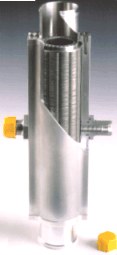Quote:
Its funny how the size of the liquid intercooler is a lot smaller than a air -to -air intercooler that is used for the same application. Chris, your using the gt42 and if you were to run a air to air the intercooler would be double or triple the size of the liquid one.
Water has a thermal conductivity 20 times that of air. If you can guarantee that the same mass of water will pass through your water/air intercooler as an equivalently efficient air/air unit, (might be possible considering that water is also much much denser than air) your intercooler could be 1/20th the size I suppose and still get the same charge air temperature reductions. Also assuming that water is at same temperature as air (ambient). Smaller intercoolers mean smaller Impedance to airflow as well.
Its funny how the size of the liquid intercooler is a lot smaller than a air -to -air intercooler that is used for the same application. Chris, your using the gt42 and if you were to run a air to air the intercooler would be double or triple the size of the liquid one.
Water has a thermal conductivity 20 times that of air. If you can guarantee that the same mass of water will pass through your water/air intercooler as an equivalently efficient air/air unit, (might be possible considering that water is also much much denser than air) your intercooler could be 1/20th the size I suppose and still get the same charge air temperature reductions. Also assuming that water is at same temperature as air (ambient). Smaller intercoolers mean smaller Impedance to airflow as well.
Last edited by a moderator:












